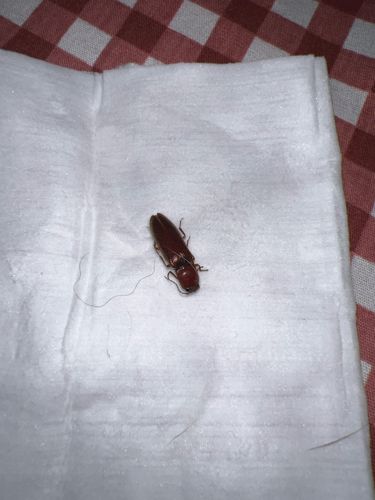Click Beetle
Scientific Name: Elateridae (family)
Order & Family: Order: Coleoptera, Family: Elateridae
Size: Typically 5mm to 60mm (0.2 to 2.4 inches), with most common species being 10-20mm.

Natural Habitat
Click beetles are found in a wide variety of habitats globally, including forests, grasslands, agricultural fields, gardens, and urban areas. Adults are often found on vegetation or near lights at night. Wireworms live underground in soil, in rotting wood, or under bark.
Diet & Feeding
Adult click beetles primarily feed on nectar, pollen, decaying plant matter, or sap. Some species are predatory on small insects. The larvae, known as wireworms, are typically herbivorous, feeding on seeds, roots, and underground stems of various plants.
Behavior Patterns
Click beetles are known for their unique 'clicking' mechanism. When overturned, they can snap a spine on their prosternum into a groove on their mesosternum, creating an audible click and propelling themselves into the air to right themselves. Most adults are nocturnal and attracted to light. Larvae (wireworms) live in soil or decaying wood and can be very destructive to plant roots. Adults typically have a relatively short lifespan.
Risks & Benefits
Potential Risks: Wireworms (larvae) can be significant agricultural pests, causing damage to crops like corn, potatoes, wheat, and vegetables by feeding on their roots and seeds, leading to economic losses. They do not bite or sting humans. Potential Benefits: Some adult click beetles act as pollinators, and some predatory wireworm species can help control other insect pests in the soil. They are also part of the food chain for birds and other animals.
Identified on: 8/18/2025